Top 100 Luxury Fashion Brands: World’s Best Global Icons (Part 1)
The top 100 luxury fashion brands are defined by their unparalleled craftsmanship, artistic innovation, and exclusivity. At the apex of the luxury pyramid stand brands that epitomise symbols of status and personal expression. From renowned haute couture houses like Nina Ricci and Vivienne Westwood, to Italian giants like Max Mara and Loro Piana, to prestigious tailors on Saville Row, and niche designers like Brunello Cucinelli – these fashion powerhouses represent the highest standards of quality, sophistication, and timeless elegance. If added to your wardrobe, their pieces can easily elevate your dress sense as an elegant woman.
Luxury goods sales are experiencing significant growth. The global luxury goods market has reached over $300 billion in value, and an annual growth rate of over 10 per cent in the previous year. Identifying the key luxury goods companies in the global retail industry is fundamental to understanding this market growth.
These comprehensive lists provide an overview of the luxury brand ranking of the top 100 luxury fashion brands in designer clothing, jewellery, bags, and shoes, like luxury loafers. We will highlight their years of experience, impactful history and brand vision, craftsmanship, iconic products and influence. Read on to delve into the most influential names shaping the luxury fashion industry today.
Saint Laurent
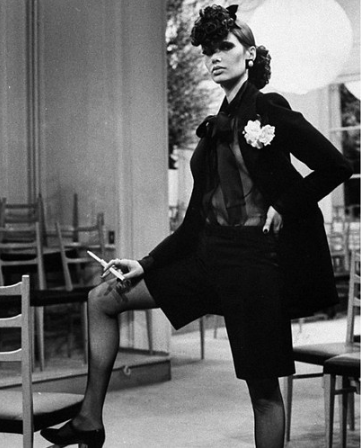
Saint Laurent is renowned for its daring, edgy approach to luxury fashion and androgynous style since its inception in 1961. Saint Laurent revolutionised women’s fashion by introducing the iconic women’s tuxedo suit, Le Smoking, in 1966. The suit blended masculinity and femininity in a sleek, tailored silhouette with structural elegance. Their sharp-shouldered blazers and impeccably cut trousers attract those seeking a powerful, modern aesthetic in their wardrobe staples.
Saint Laurent is renowned for its leather goods and luxury fashion accessories. Their iconic bags, including the Sac de Jour, which exudes understated elegance, and its sleek, modern black boots. Additionally, the over-the-knee Niki Boots, crafted in leather or suede, embody the brand’s signature edgy aesthetic. They effortlessly combine sophistication with bold, contemporary design.
Alexander McQueen
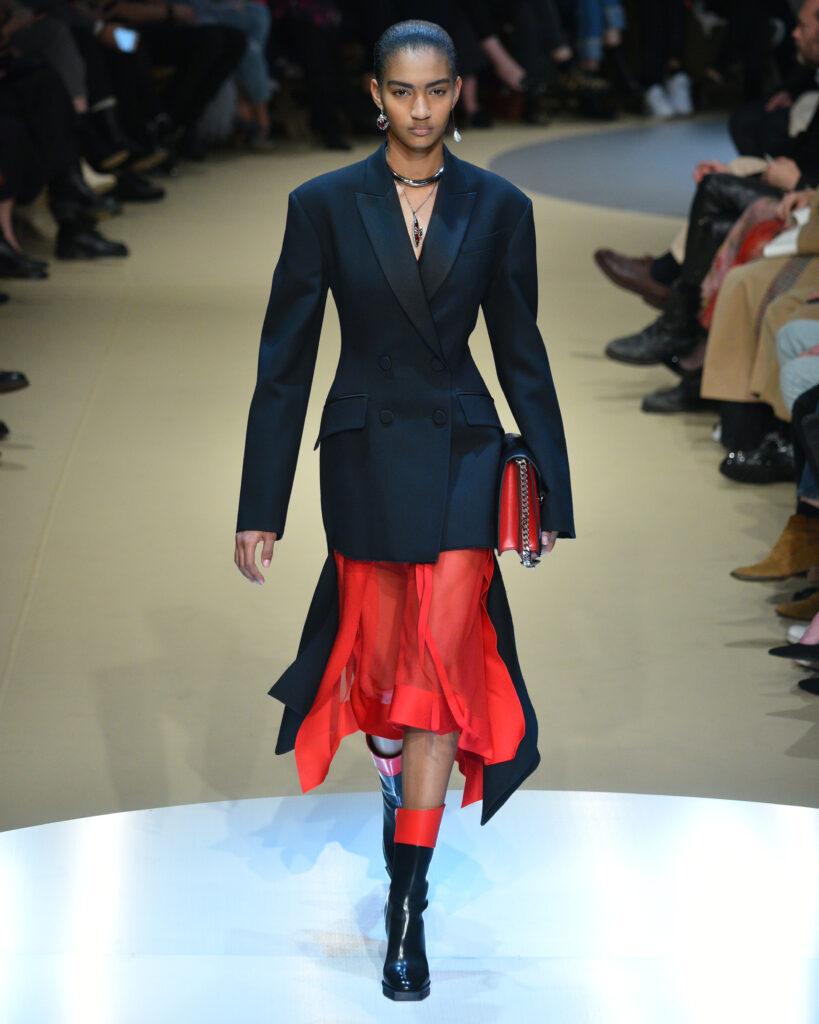
Alexander McQueen is a pioneer of avant-garde fashion. The brand blends luxury fashion with daring, artistic expression, often inspired by history, nature, and Gothic imagery. A deep fascination with the macabre, British history, and traditional craftsmanship inspired the designer, Lee Alexander McQueen. Known for its dark romanticism and theatrical runway shows, McQueen’s collections celebrate innovative design and impeccable tailoring.
The brand leads in luxury goods and modern fashion artistry with its haute couture pieces. The Alexander McQueen Skull Clutch is a signature accessory. Notably, McQueen’s ability to fuse history with contemporary elements sets the brand apart in the world of luxury fashion brands. For example, McQueen incorporates historical references—such as Victorian silhouettes and military influences—into modern designs. The brand blends timeless narratives with avant-garde fashion. Therefore, McQueen creates pieces that are not only visually striking but also rich in cultural significance.
Givenchy
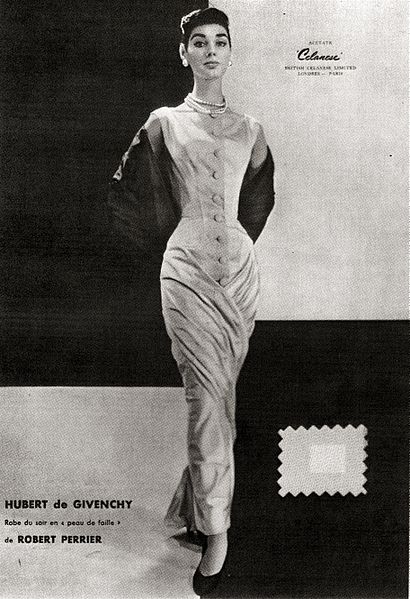
Givenchy is a major force in the world of luxury fashion brands. The brand blends elegant minimalism with avant-garde designs, particularly under the direction of Hubert de Givenchy in 1952. Furthermore, Givenchy revolutionised fashion by designing iconic, effortless styles for Audrey Hepburn, blending sophisticated glamour with modern, practical functionality. Later designers like Clare Waight Keller drove Givenchy’s appeal to new heights as a go-to for royal events, notably designing Meghan Markle’s wedding dress.
The Antigona bag, a hallmark of Givenchy’s accessory line, exemplifies the brand’s success globally. Its sleek, structured design and understated elegance reflect the brand’s ability to merge French luxury with international appeal.
Schiaparelli
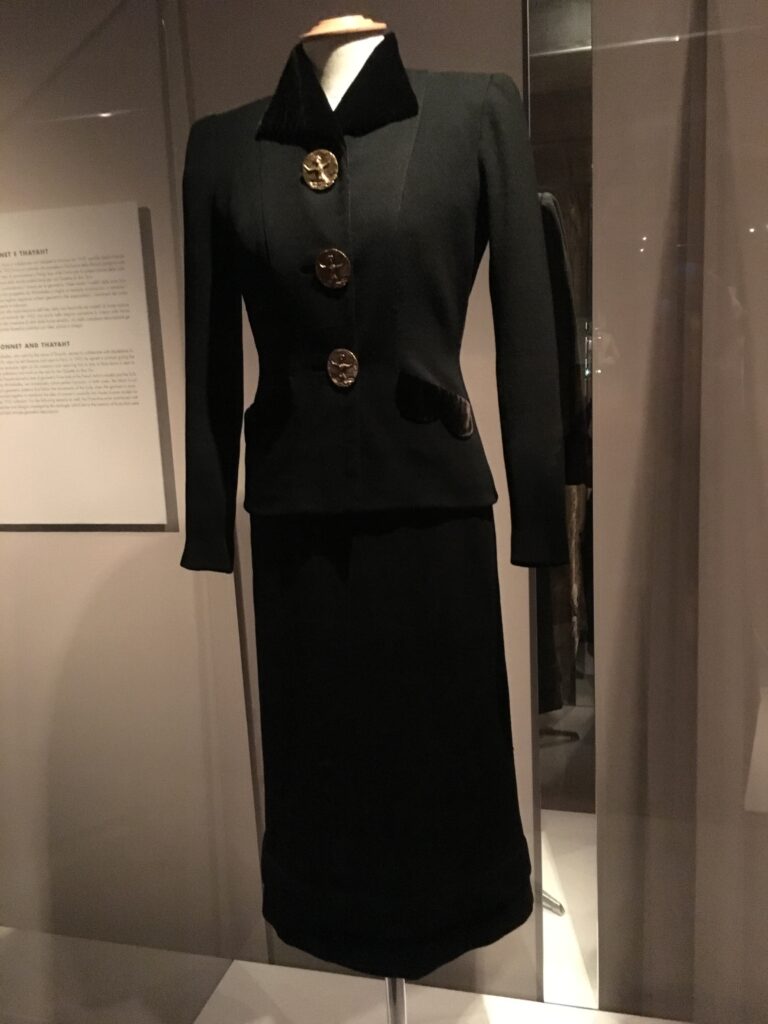
Schiaparelli is an emblem of haute couture. Elsa Schiaparelli founded the brand in 1927. The brand embodies imaginative creation with whimsical and surreal design. The Schiaparelli Lobster Dress features a lobster motif painted across the skirt—a striking example of its surreal aesthetic. The designs established Schiaparelli as a pioneer of creative fashion. In the 1930s, Schiaparelli’s designs captivated high society through endorsements from celebrities like Wallis Simpson and Marlene Dietrich. Her innovative fashion shows, renowned for their theatrical presentations, became major events in Paris attended by the elite, and garnered significant press coverage.
Schiaparelli’s collections often feature large gold brooches and statement necklaces, crafted from luxurious materials such as brass and gold-plated metals. These opulent details set Schiaparelli apart by merging extravagant artistry with high fashion. Celebrities have continued to showcase Schiaparelli’s distinctive designs at prestigious events like the Met Gala.
Atelier Versace
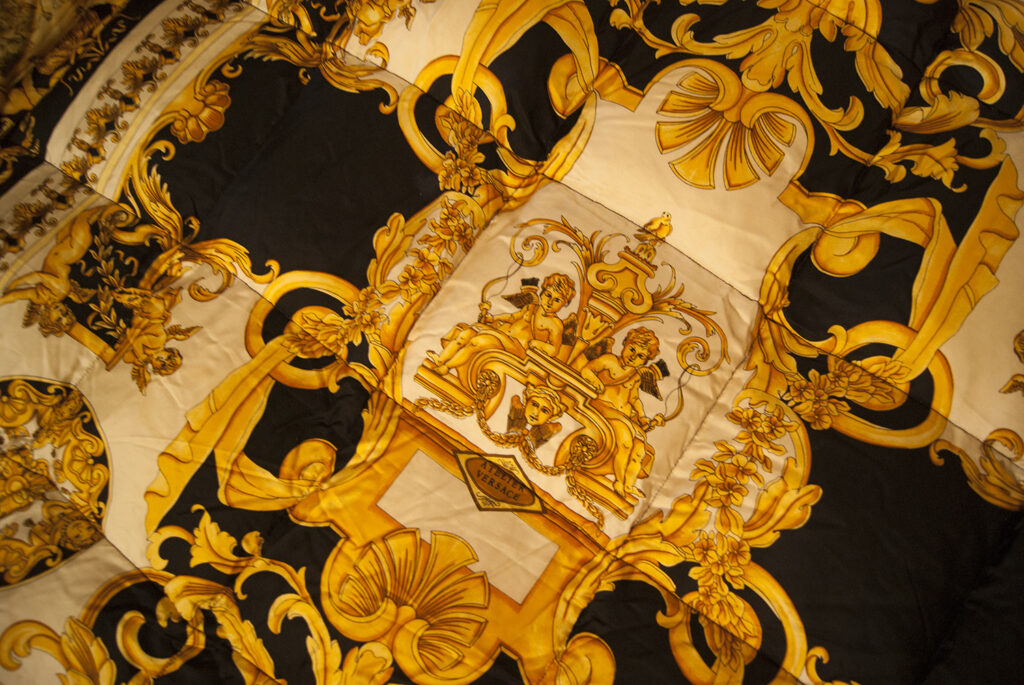
Gianni Versace founded Atelier Versace in 1978 following his bold and opulent style that epitomises the zenith of luxury fashion in its exclusive haute couture creations. The luxury brand swiftly rose to being one of the top 100 luxury fashion brands through its glamorous and high-octane designs. The designs exude intricate craftsmanship and bold embellishments. Versace’s expansion into ready-to-wear fashion, accessories, and perfumes established it as a comprehensive luxury lifestyle brand.
Versace resonated with a wide audience, particularly in the 1980s and 1990s, due to its daring cuts and vibrant colours. The distinctive use of motifs such as the Medusa head and Baroque flourishes in gold, black, and white became hallmarks of the brand. Additionally, Gianni Versace’s close ties to supermodels, musicians, and Hollywood stars, alongside delivery of runway grandeur, solidified Versace’s prominence. In fact, Versace helped pioneer the ‘supermodel’ phenomenon in the ’90s by casting top models like Naomi Campbell and Cindy Crawford in his shows. Today, Atelier Versace remains a coveted name in luxury fashion under Donatella Versace’s creative direction, continuing to push the boundaries of modern couture with its elaborate gowns and tailored suits.
Ellie Saab
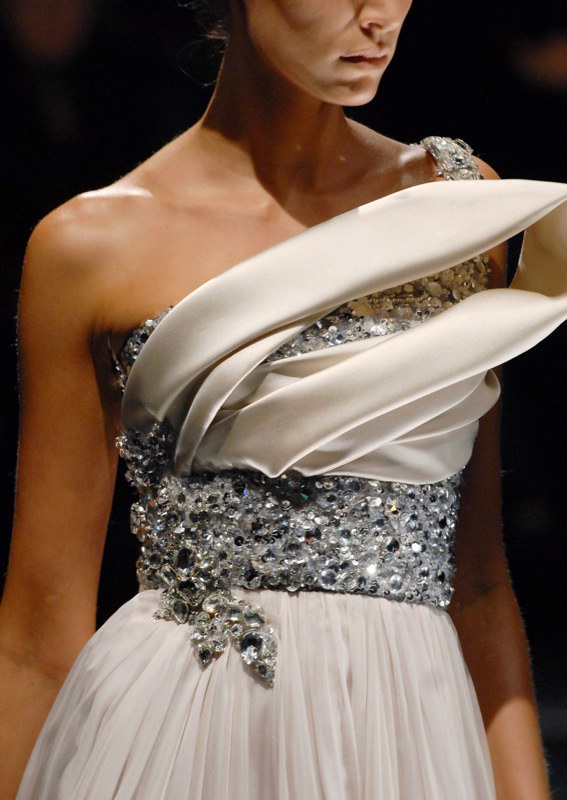
Elie Saab is a distinguished name in haute couture from Lebanon, recognised globally for its ethereal designs and romantic craftsmanship. Established over 40 years ago, the brand has risen to prominence through its commitment to opulence, attention to detail, and timeless elegance. Saab’s couture creations showcase intricate embroidery, flowing silhouettes, and luxurious fabrics. Since Halle Berry famously wore Elie Saab’s gown at the 2002 Oscars, the brand’s sales, global visibility, and demand for couture pieces for high-profile events on the red carpet skyrocketed. Moreover, Saab’s 2012 bridal line expanded the brand’s market reach, propelling sales beyond haute couture and into the luxury bridal sector.
Elie Saab stands out due to its fusion of Middle Eastern artistry with European haute couture. His pieces reflect French elegance in particular, given Lebanon’s historical ties to France, and following Saab’s extensive work in Paris, the epicentre of haute couture. This unique blend creates designs that are both contemporary and regal, capturing both regional and international markets. Hence, Elie Saab appeals to a diverse and discerning clientele from its position amongst the world’s most prestigious luxury fashion houses.
Fendi
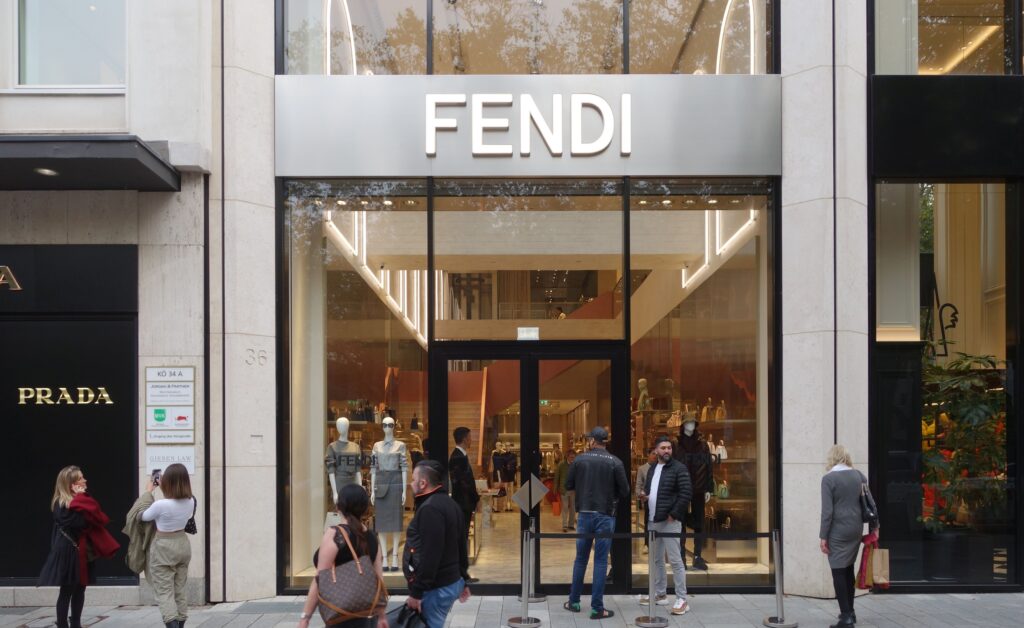
Luxury brand Fendi was established in Rome from its early beginnings as a family-run fur and leather shop in 1925. Fendi rose to international prominence as one of the top 100 luxury fashion brands by revolutionising the use of fur. The brand transformed fur into a symbol of modern elegance rather than mere functionality. The brand set itself apart with its dedication to superior craftsmanship, attention to detail, and bold creativity. These factors, alongside Italy’s historical trading routes and decentralisation, epitomise why Italy has so many luxury brands.
A pivotal moment in Fendi’s history came in 1965 when Karl Lagerfeld joined as creative director, a role he held for over five decades. His visionary leadership pushed Fendi’s couture collections to new heights, blending opulence with avant-garde design. The introduction of the iconic Baguette bag in 1997 further catapulted Fendi to global fame, particularly in the luxury handbag market. Today, Fendi remains at the forefront of luxury fashion, balancing timeless elegance with cutting-edge design. As part of the LVMH conglomerate, Fendi benefits from the global reach and resources of the world’s largest luxury group.
Giorgio Armani Prive
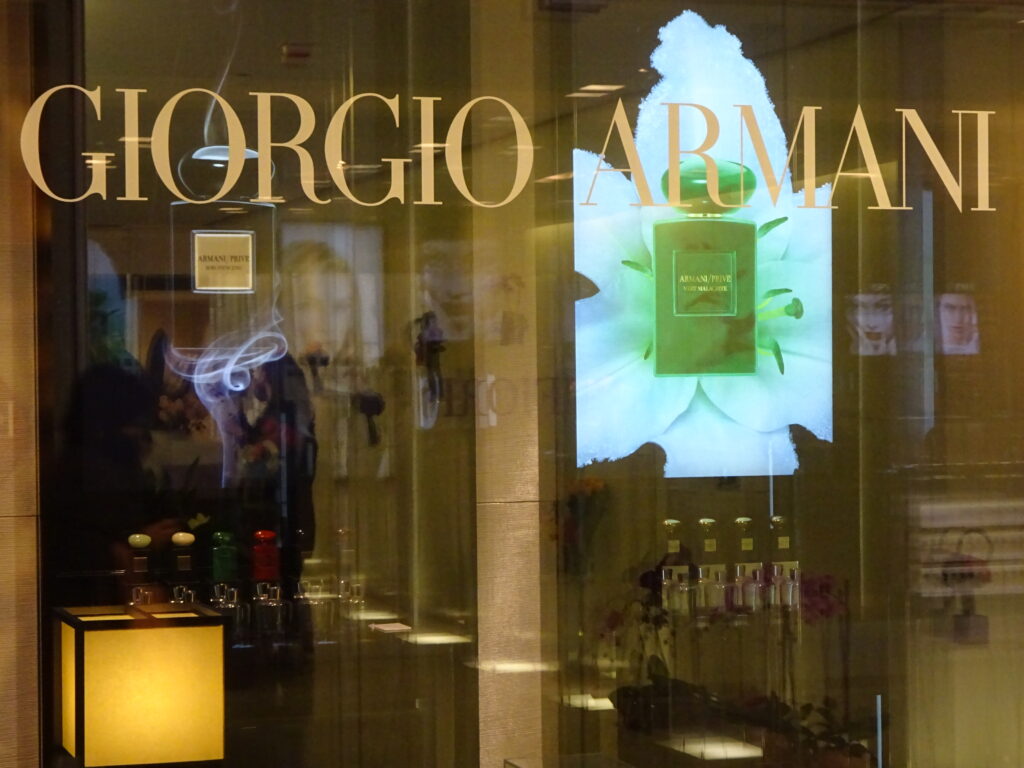
Giorgio Armani Prive is the haute couture line of the renowned Giorgio Armani brand, established in 2005. The Prive line creation responded to the growing demand by clientele for bespoke, high-fashion evening wear. The luxury evening wear and red-carpet gowns blend the sleek, minimalist aesthetic of the core Giorgio Armani brand with the grandeur and artistry of haute couture for understated opulence.
Armani Prive’s regular presence at Paris Couture Week underscores its prominence in the haute couture world. Here, the brand showcases its commitment to classic elegance and modern innovation. The global influence of the Giorgio Armani conglomerate has bolstered Armani Prive’s international acclaim.
Valentino Garavani
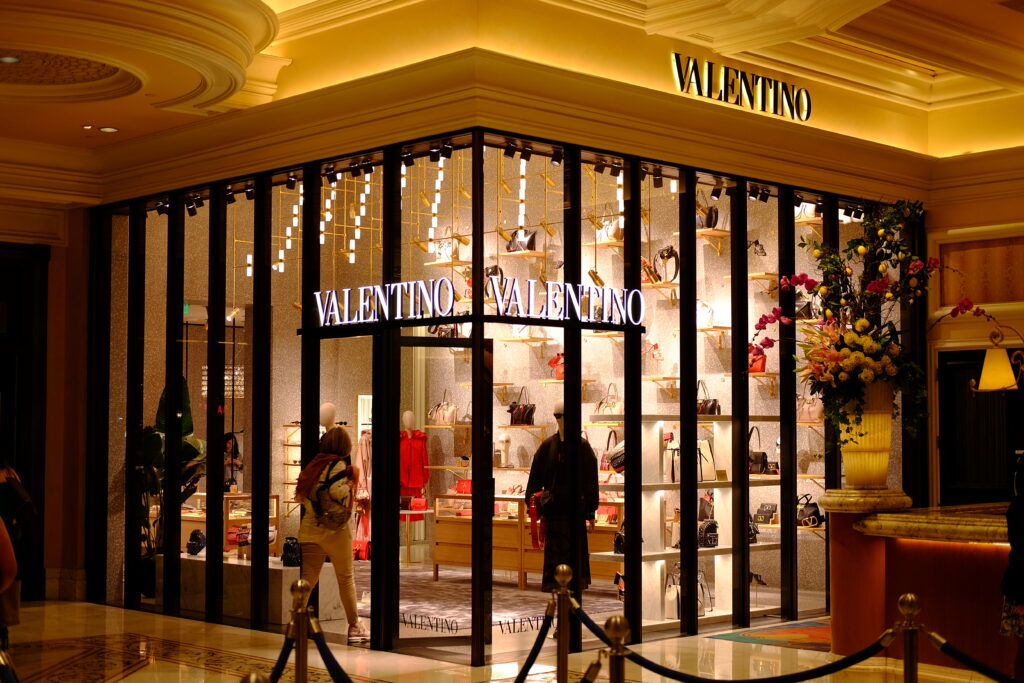
Since the 1960s, Valentino Garavani has been a leading name in the top 100 luxury fashion brands, known for its opulent and romantic aesthetic. The brand rose to prominence with its signature red gowns, prized for their luxurious fabrics and intricate detailing. In fact, Valentino is celebrated for its Rockstud collection, which features distinctive studs on shoes, handbags, and accessories. The iconic “Valentino Red” pumps are celebrated symbols of luxury and sophistication.
Following its 2008 acquisition by Permira, Valentino strategically expanded into Asia. Then, the brand opened flagship stores in Tokyo and Shanghai, capitalised on the region’s ‘luxury boom’ that saw major cities become global fashion hubs from the 2000s. Therefore, this expansion allowed Valentino to enhance its haute couture image among a new, affluent audience. Unlike competitors such as Gucci and Prada, which focus on modern styles, Valentino stands out for its timeless elegance. Today, Valentino’s designs regularly feature in major fashion publications and are a staple at prestigious events such as the Oscars and Cannes Film Festival.
Hermès
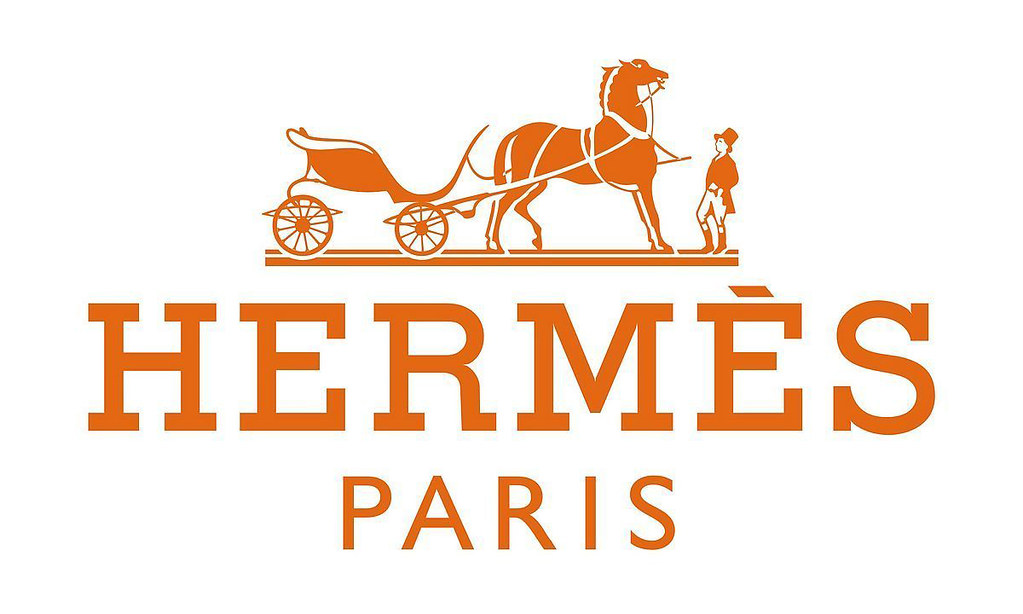
World’s most coveted bags
Hermès is the epitome of exclusivity within the top 100 luxury fashion brands worldwide. The brand is renowned for its impeccable craftsmanship and heritage. Hermès has become a symbol of ultimate luxury for its iconic Birkin and Kelly bags since the brand’s establishment in 1837. Notably, each Hermès Birkin bag is hand-stitched in France by artisans. A single bag taking up to 18 hours to craft, reflecting unparalleled attention to detail.
Hermès’s commitment to artisanal craftsmanship and premium materials, such as exotic leathers like crocodile and ostrich leather, sets it apart from other haute couture brands. Moreover, to obtain a Hermès bag, customers often face a rigorous selection process, with limited availability and a waiting list for coveted models. Moreover, the brand also offers a range of luxury belts, known for their quality and distinctive design.
Hermès’s commitment to artisanal craftsmanship and high-quality standards has established it as one of the most coveted and exclusive names in luxury goods.
Viktor & Rolf
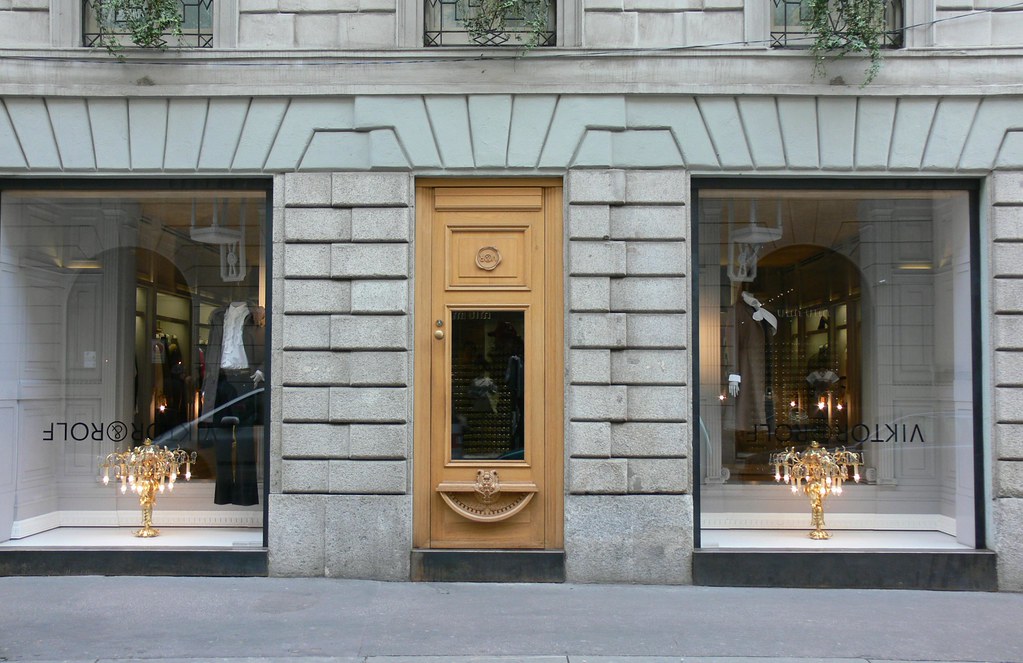
Known for their avant-garde approach to haute couture, Viktor & Rolf are innovators in the luxury fashion industry. The brand is celebrated for its conceptual runway shows and theatrical designs, which often blur the lines between fashion and art. Their couture collections push boundaries with bold silhouettes and exaggerated forms, distinguishing Viktor & Rolf in the luxury fashion industry.
Viktor & Rolf’s rise to fame was marked by their innovative use of fabric and form. Iconic products, such as their sculptural dresses and statement pieces, have solidified their reputation. Furthermore, the brand expanded into fragrances with major hits like its “Flowerbomb”. In fact, the fragrance accounts for approximately 30 per cent of the brand’s total sales. It features top notes of bergamot and tea, a heart of jasmine, orange blossom, and orchid, and a base of patchouli and vanilla.
Valextra
Valextra is an esteemed Italian luxury fashion brand founded in 1937. The brand’s emphasis on artisanal techniques and attention to detail in crafting leather goods that maintain their value over time has established it as a paragon of refined luxury. Valextra’s commitment to craftsmanship is evident in its innovative “invisible” stitching. This is a technique that hides seams and creates a sleek, seamless appearance that sets it apart from other luxury brands.
As a result, this exclusive method of stitching enhances the bag’s refined look. Additionally, it is a signature feature that contributes to Valextra’s reputation for sophisticated design. The brand maintains a high level of exclusivity by offering its products through a limited number of boutiques in major fashion cities like Milan, Paris, and New York. Their highly sought-after products appeal to those who appreciate subtle sophistication over overt branding in the luxury market.
Moynat
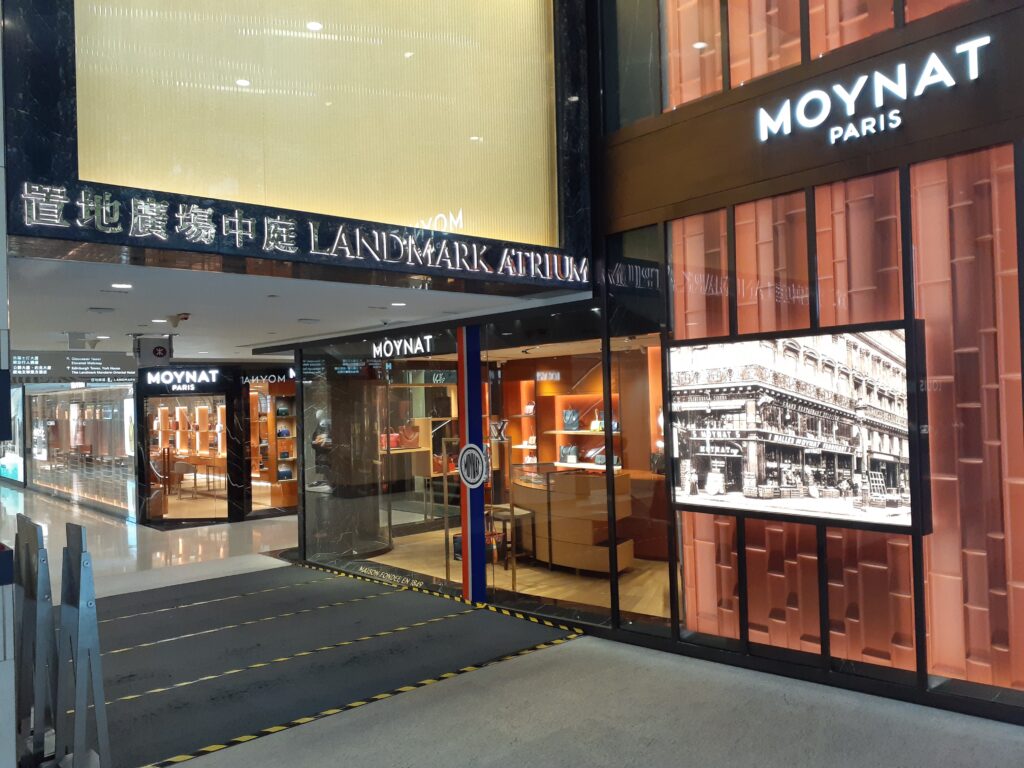
Paul Moynat founded the Parisian house of Moynat in 1849. The brand is distinguished by its rich heritage in crafting luxury leather goods. Skilled artisans meticulously handcraft each item, ensuring precise stitching and finishing. Moynat quickly gained recognition for its high-quality, bespoke travel trunks and bags with unique features and dimensions. Continuous innovation in design and materials, such as lightweight construction, helped Moynat stay competitive. Catering to a discerning clientele, including prominent figures and royalty, boosted the brand’s prestige.
In the late 1800s, Moynat’s innovative use of reinforced canvas and durable leather set its products apart from competitors who, at the time, produced heavier travel bags. Moynat was one of the first to offer personalised monogramming and custom fittings, catering to the specific needs of affluent travellers. However, in 2010, Moynat underwent a revitalisation under the ownership of the luxury conglomerate LVMH. Though, Moynat’s commitment to traditional techniques and unique designs still establishes it as a leading name in luxury travel goods.
Balenciaga
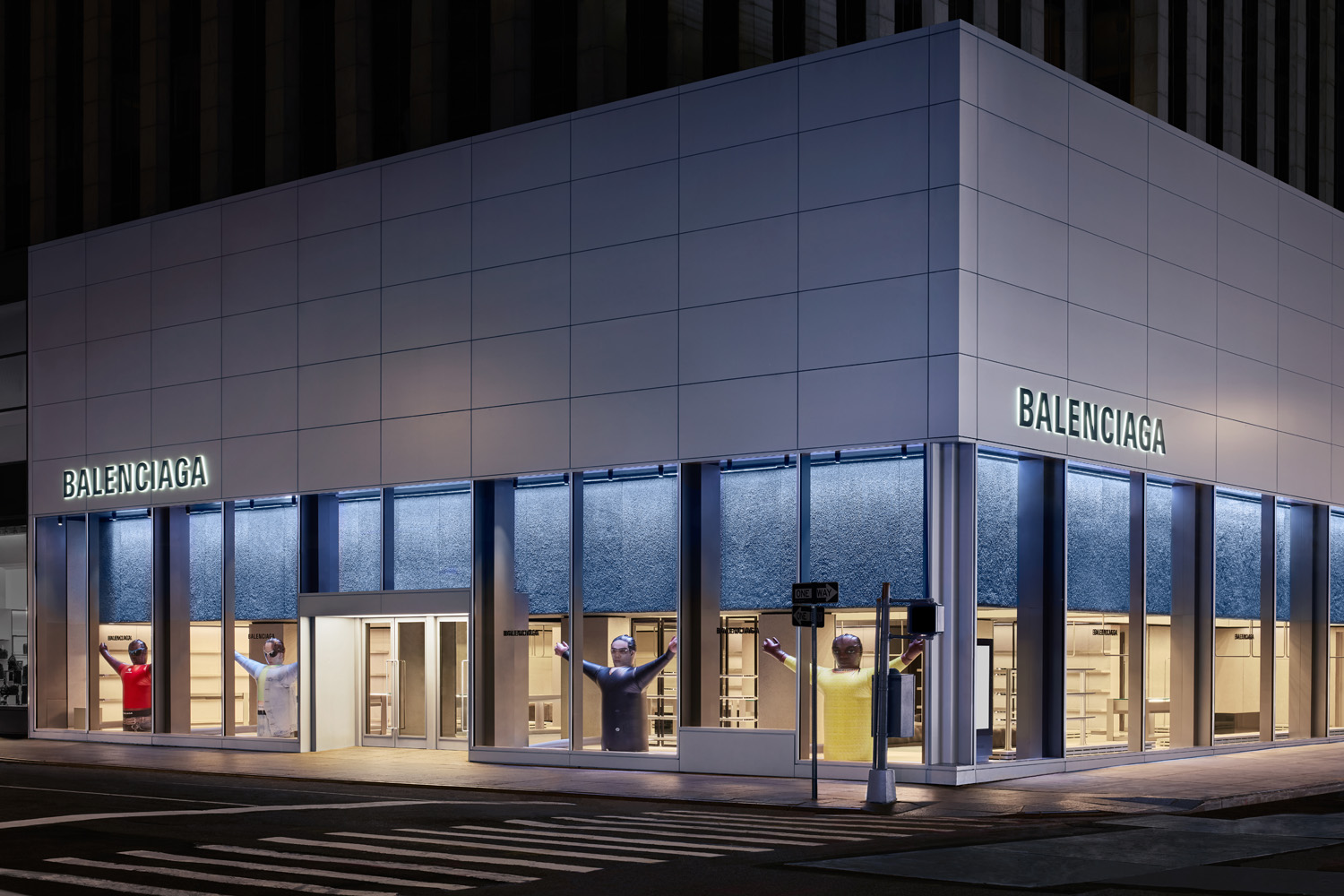
Balenciaga is one of the most influential luxury fashion brands, known for pushing the boundaries of fashion with its avant-garde designs. Founded by Cristóbal Balenciaga, the brand has continually redefined luxury with its bold silhouettes, innovative cuts, and modern aesthetic. Notably, the Fall/Winter 2016 collection under Demna Gvasalia redefined Balenciaga’s direction. The collection merged high fashion with streetwear in a way that set the tone for future collections.
Ultimately, from its notable handbags to its high-fashion streetwear, Balenciaga remains a dominant force in the luxury fashion industry.
Tom Ford
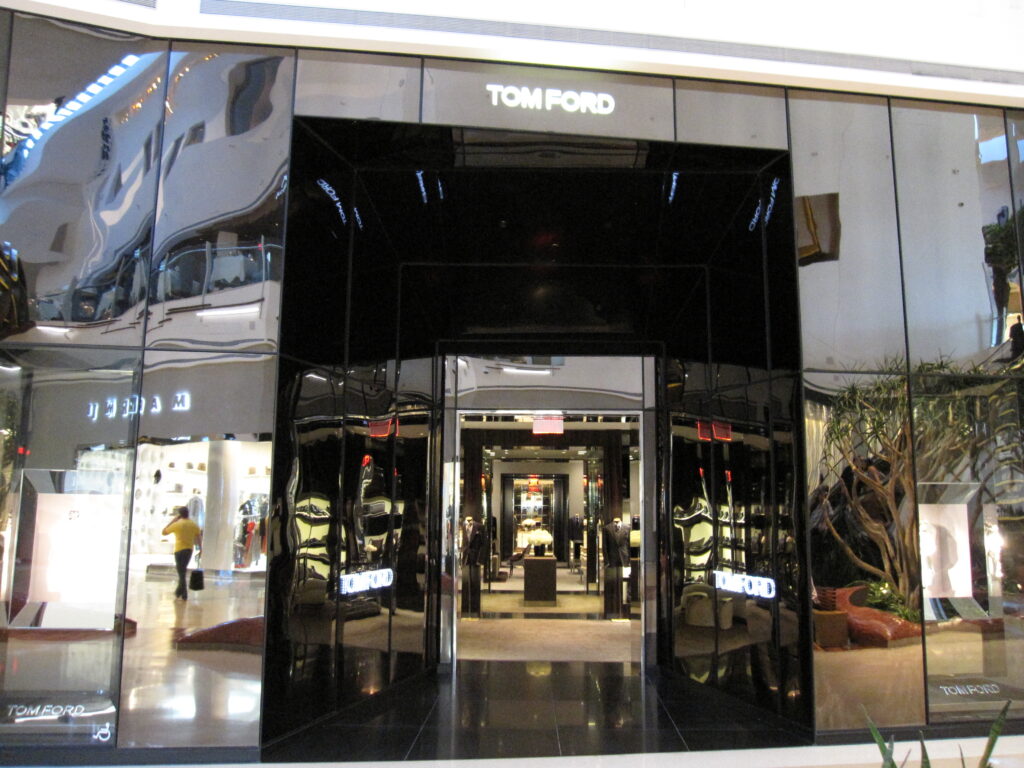
Founded in 2005, Tom Ford has transformed the luxury fashion landscape with his sleek, modern approach and bold sophistication. His glamorous designs, inspired from Hollywood’s golden age, where characterised by sleek silhouettes, luxurious materials, and sensual appeal that resonated with high-end clientele. Ford gained prominence through his transformative work at Gucci before launching his eponymous brand. Now, Tom Ford’s largely carries out its production in Italy, with garments manufactured by skilled artisans in Italian workshops with meticulous craftsmanship.
Tom Ford’s luxury fashion line is distinguished by its evening wear, tailored suits, and accessories such as sunglasses, perfumes, and cosmetics. As a result, his commitment to glamour and sex appeal has attracted a devoted following. Ford’s strategic direction focuses on combining high fashion with a distinct, refined edge, setting the brand apart from others in the luxury sector. Particularly, Ford’s inspiration from classic glamour and his innovative use of fabrics and designs contribute to its global success. For instance, his tailored suits often feature precise cuts and luxurious fabrics like silk, velvet, and cashmere, offering a refined yet assertive presence.
Cartier
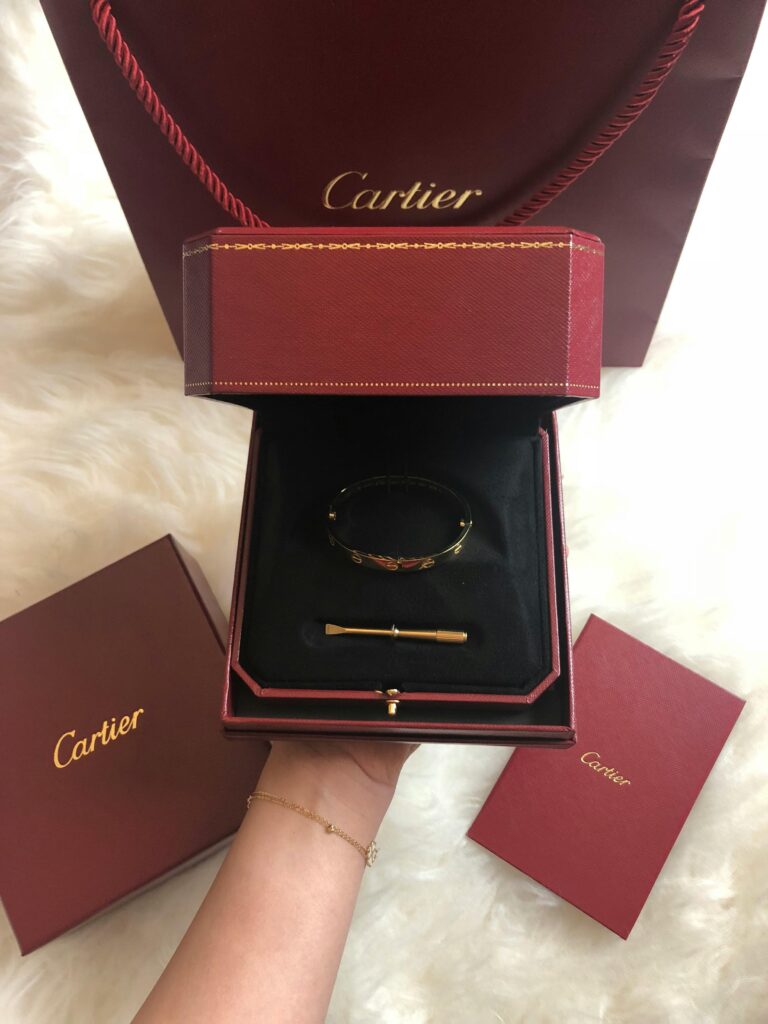
Louis-François Cartier founded Cartier in 1847. Cartier quickly rose to fame as a symbol of luxury and innovation in fine jewelry and watches. Notably, their Love bracelets and rings went viral in the 2010s, widely popularised on social media. However, the brand is distinctive for its exceptional selection of diamonds and precious stones, sourced with a commitment to quality. Cartier uses gemstones of the highest grades. Their diamonds are typically of superior cut, clarity, and carat weight. Therefore, Cartier typically uses D to F colour diamonds, which are near-colourless or colourless. They tend to be of VS1 to IF clarity grades, ensuring near-flawless stones of high brilliance and rarity. Consequently, these are often featured in pieces that emphasise elegance and timeless design.
Meanwhile, Cartier’s watch range stands out for its pioneering contributions to horology and iconic models. The Santos de Cartier watch was designed in 1904 as one of the first wristwatches, and the Tank Watch later in 1917. These timepieces combined revolutionary design with functionality, establishing Cartier as a key player in watchmaking. Merging its French heritage and expertise in jewelry, Cartier enhances its timepieces with precious diamonds, gold, and platinum. Their watches attract those seeking timeless, elegant designs that exude luxury craftsmanship and precision.
Boucheron
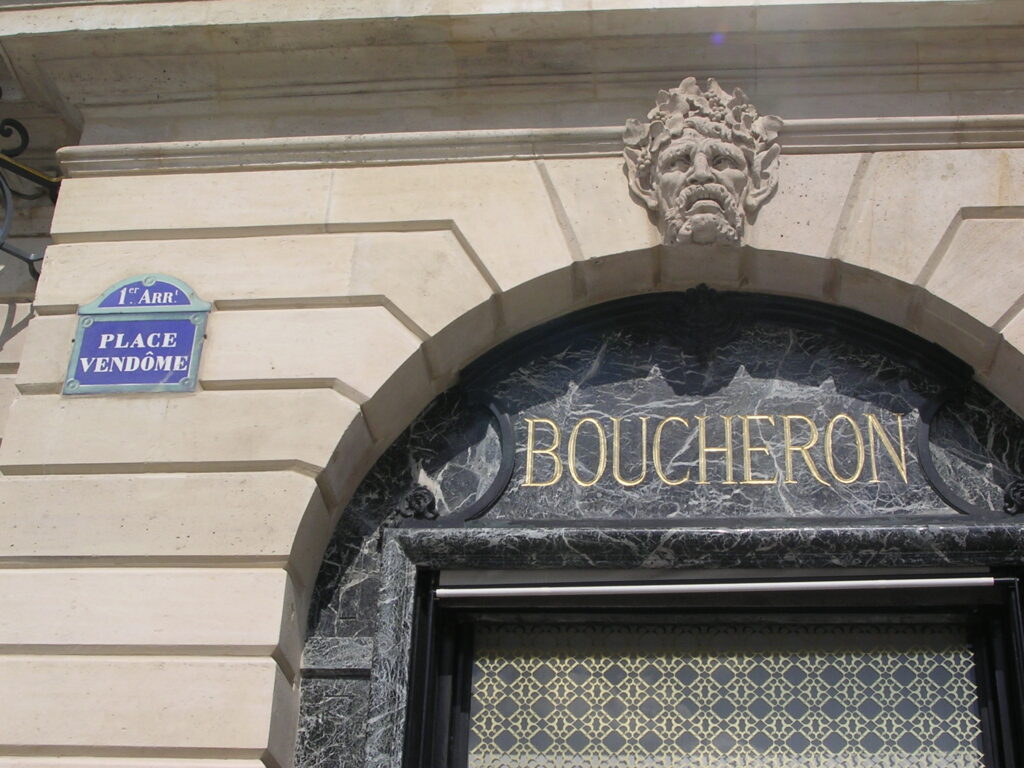
Frédéric Boucheron founded Boucheron, one of the oldest luxury jewelry brands in Paris, in 1858. His inspiration came from nature and architecture, leading to pioneering designs that stood out for their creativity and technical mastery. The brand offers iconic high jewelry, like the Serpent Bohème and Quatre collections, blending bold innovation with timeless elegance.
Boucheron solidified its global luxury status when it became renowned for dressing royalty and elite clientele, including Queen Elizabeth II and Maharaja of Patiala. When looking at the top 100 luxury fashion brands, we can see a clear emphasis on quality. Boucheron’s pieces often feature high-grade diamonds that are typically D to F in colour, with VVS1 to IF clarity. In fact, these represent the highest standard in the industry. Boucheron also employs brilliant-cut diamonds to maximise sparkle and light refraction. Moreover, the brand also sources rare stones such as sapphires, emeralds, and rubies. In particular, these are sourced ethically from renowned regions like Burma for rubies and Colombia for emeralds.
Acquired by the Kering Group, Boucheron maintains its reputation for exclusive, hand-crafted jewelry. The brand leverages traditional techniques like invisible setting and advanced stone-cutting to ensure unmatched craftsmanship.
Van Cleef & Arpels
Alfred Van Cleef and his wife Estelle Arpels founded luxury jeweller Van Cleef & Arpels in 1906. The founders drew inspiration from nature, love, and fairy tales, blending heritage with modern luxury. Van Cleef & Arpels quickly rose to prominence for its elegant designs and masterful craftsmanship. The brand stands out for its whimsical and feminine aesthetic. In iconic collections like Alhambra that debuted in 1968, stones are crafted with precision and artistry to form the signature quatrefoil motif seen in their necklace, bracelet, and earring pieces. This motif, often set with mother-of-pearl, malachite, onyx, or turquoise, is celebrated for its symbolism of luck and fortune.
Also, Van Cleef & Arpels’ use of exceptional diamonds (known for their D to F color grades and internally flawless clarity) and rare stones elevated its status in the world of haute joaillerie. With its unparalleled attention to detail and unique designs, the brand remains a global symbol of timeless beauty and artisanal excellence in jewelry.
Tiffany & Co.
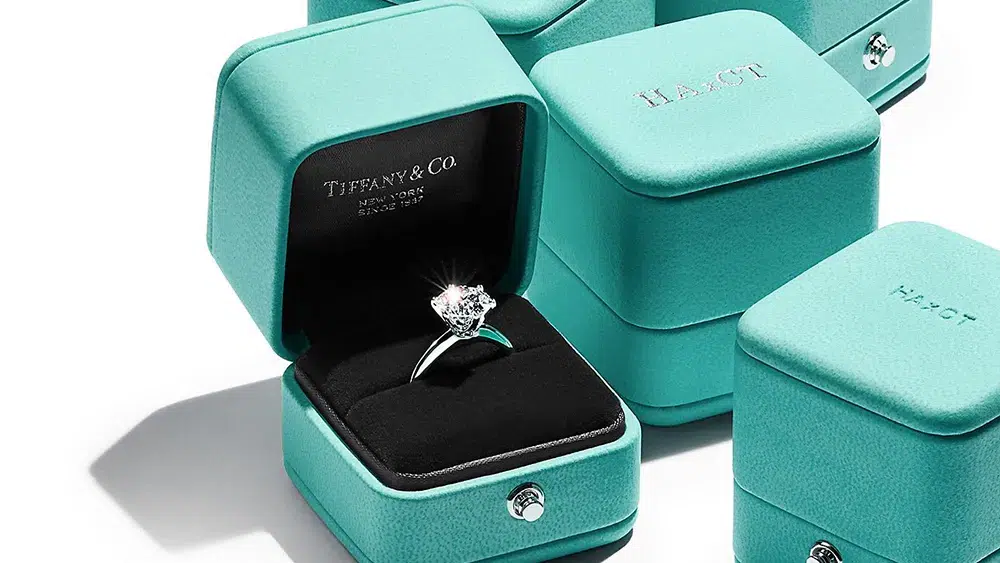
Charles Lewis Tiffany founded Tiffany & Co. in 1837. The brand is an established hallmark of luxury jewelry, celebrated for timeless elegance and exquisite craftsmanship. Renowned for iconic pieces like the Tiffany Setting engagement ring and its signature Tiffany Blue Box, the brand distinguishes itself through innovative design and unmatched quality.
Tiffany & Co. has built a reputation for sourcing the finest diamonds, often graded D to F for colour and VVS1 to IF for clarity. Notably, approximately 0.1% of the world’s diamonds meet Tiffany’s rigorous standards, ensuring superior brilliance and purity. With collections ranging from delicate silver to opulent high jewelry, Tiffany appeals to a wide audience. Additionally, they have further solidifying its global presence through iconic marketing and pop culture partnerships. Therefore, its focus on heritage, craftsmanship, and design innovation keeps Tiffany & Co. at the forefront of haute joaillerie.
Georges Hobeika
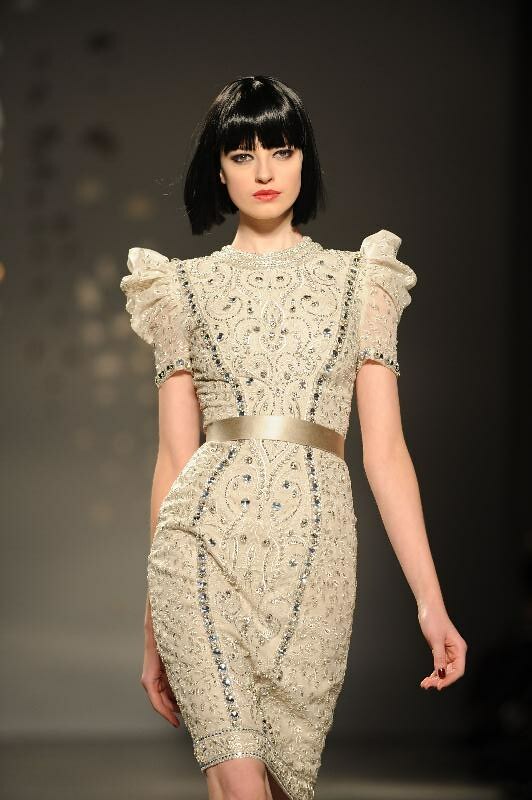
Georges Hobeika is a leading name in haute couture. The Lebanese designer gained international acclaim for his ethereal, romantic designs since founding his eponymous brand in 1995. His intricate embroidery, delicate, flowing fabrics, and feminine silhouettes set him apart from other luxury brands, positioning him as a master of timeless elegance.
Hobeika’s gowns, often worn on red carpets and in bridal collections, showcase his commitment to luxury craftsmanship. Likewise, his strategic focus on couture precision and artistic design has propelled the brand to global fame, solidifying its status among the most prestigious names in the world of high fashion.
Zuhair Murad
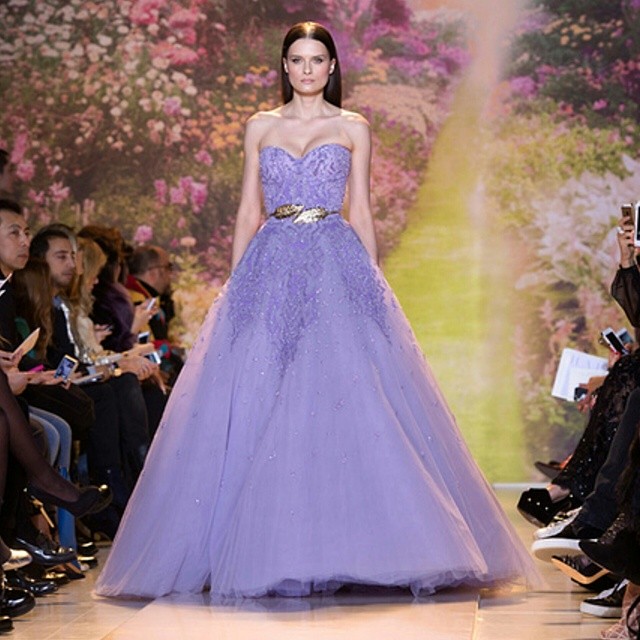
Zuhair Murad, established in 1997, quickly rose to fame for his dramatic, ultra-glamorous designs. Notably, he quickly became a standout in haute couture and one of the top 100 luxury fashion brands globally. Known for intricate beadwork, opulent fabrics, and elaborate detailing, his gowns embody red-carpet luxury, making the brand a favourite among celebrities.
Furthermore, Murad’s inspiration draws from femininity, Middle Eastern heritage, and European elegance, blending these elements to create show-stopping evening wear. The brand’s signature pieces—lavish gowns and embellished dresses—set it apart with their high-end craftsmanship and bold aesthetics. With strategic expansion into bridal collections and ready-to-wear, Zuhair Murad’s global appeal continues to grow, cementing his reputation in luxury fashion.
Dolce & Gabbana
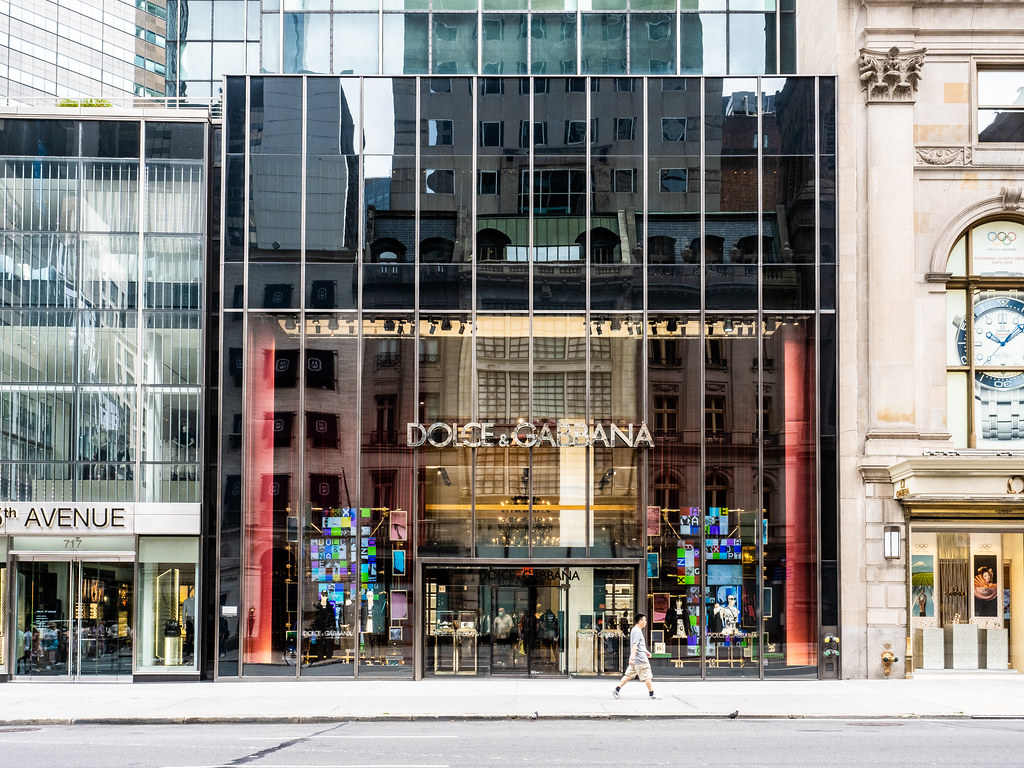
Domenico Dolce and Stefano Gabbana founded Dolce & Gabbana in 1985. The brand quickly became synonymous with bold, opulent designs that draw heavily on Mediterranean and Italian heritage. Known for its vibrant prints, intricate lacework, and romantic florals, the brand has established itself as a leader in both haute couture and ready-to-wear fashion. Iconic motifs such as Sicilian baroque, religious imagery, and the use of black lace reflect their deep cultural influences. Their signature leopard prints and the recurring use of rich colours like gold and red have become synonymous with the brand’s dramatic aesthetic.
Strategically, the brand has diversified into fragrances and cosmetics, expanding its influence across the luxury sector. They are also a prominent Italian designer sunglasses brand. However, the brand is not part of a conglomerate. Instead, Dolce & Gabbana’s international fame grew through high-profile collaborations, runway spectacles, and celebrity endorsements. Their commitment to Italian craftsmanship and distinct, bold visual identity sets them apart from other luxury brands.
Bottega Veneta
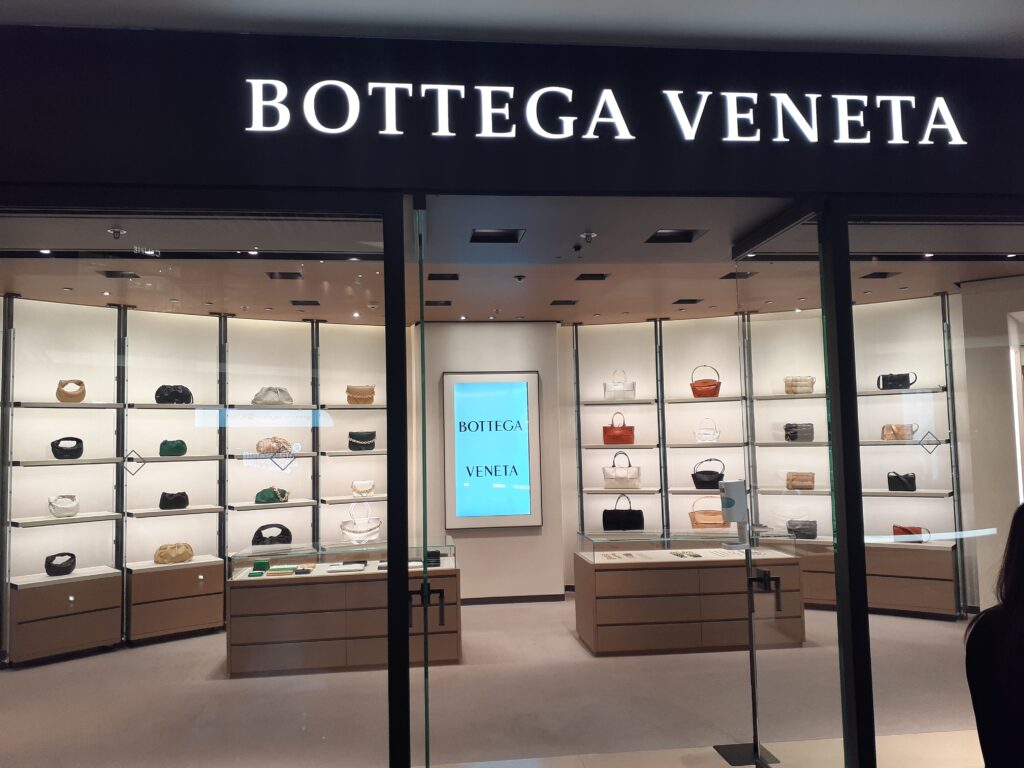
Bottega Veneta is a leader in luxury leather goods and bags within the top 100 luxury fashion brands. It is particularly renowned for its signature intrecciato weave, a technique that involves hand-weaving leather to create a distinct, durable texture. The brand initially epitomised “quiet luxury” since 1966 through minimalist designs that emphasised craftsmanship and material quality. However, under the creative direction of Daniel Lee since 2018, Bottega Veneta expanded its aesthetic. In contrast, bold, statement pieces, such as the shiny gold Croissant bag and the furry green “Pouch”, showcase a daring approach to luxury.
The introduction of vibrant colours, notably sea green or “Bottega Green”, has become a hallmark of the brand in alignment with Lee’s vision of modern sophistication. For example, iconic handbags like the Cassette bag remain essential accessories for those seeking refined luxury. Meanwhile, the brand’s commitment to quality and innovation continues to enhance its international reputation in the luxury fashion market.
Prada
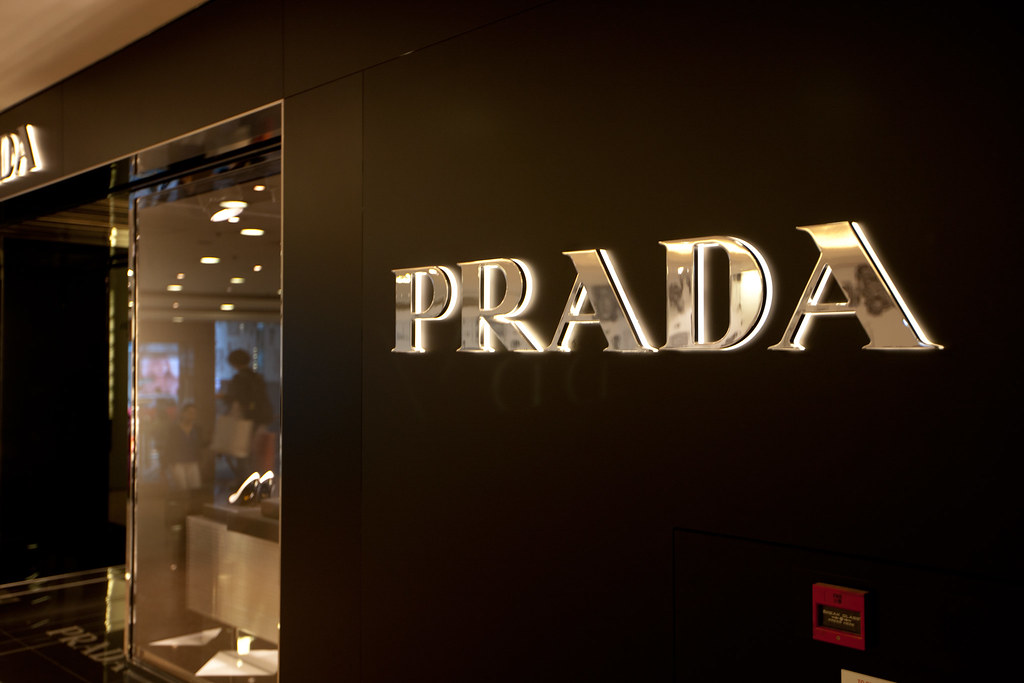
Mario Prada founded Prada in Milan in 1913. Prada stands as a pillar of luxury fashion, celebrated for its innovative designs that seamlessly blend tradition with modernity. The brand initially specialised in leather goods and accessories. Its international fame grew significantly under the creative direction of Miuccia Prada in the late 1970s. Her vision integrated art, culture, and fashion, appealing to a sophisticated clientele and establishing Prada as a leader in the luxury market. Prada’s iconic nylon bags were introduced in the late 1970s. Notably, the bags revolutionised luxury accessories by transforming a utilitarian material into a symbol of high fashion. Furthermore, Prada is known for its unique fabrics, including Saffiano leather, a distinctive textured leather that is both durable and sophisticated.
Moreover, Prada pushes boundaries through its avant-garde designs and thought-provoking collections that challenge traditional notions of beauty and fashion. One of the standout trends among the top 100 luxury fashion brands is the use of contemporary themes. For example, Prada frequently explores themes of identity, gender, and culture in their pieces that provoke conversation and inspire new trends.
Christian Louboutin
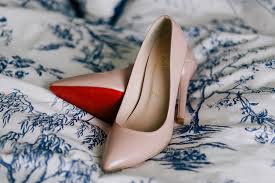
One of the most recognised brands amongst the top 100 luxury fashion brands is undeniably Christian Louboutin. After all, Christian Louboutin revolutionised luxury footwear with his iconic red-soled shoes, which signify status and elegance. The red sole also draws inspiration from the shoes of royalty, such as King Louis XIV of France who wore red-soled shoes to signify his elevated position. Known for daring, glamorous designs, Louboutin’s collections include best-sellers like the “Pigalle” pumps and “So Kate” stilettos. His shoes, ranging from classic pumps to embellished styles, embody both beauty and prestige, making the brand a favourite amongst women worldwide.
Christian Louboutin’s revenues, which exceeded $600 million in 2019, position it strongly among top luxury shoe brands. Therefore, by combining bold aesthetics with exceptional craftsmanship, Louboutin continues to set the standard in high-end footwear.
Alexandre Vauthier
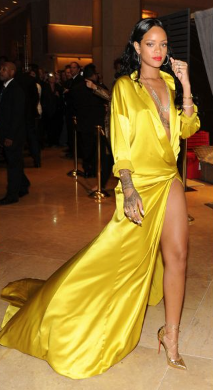
Alexandre Vauthier’s rise in haute couture stems from his strong industry connections and bold, glamourous designs. Vauthier honed his craft under legendary designers Thierry Mugler and Jean Paul Gaultier. Thereafter, Vauthier founded his eponymous brand in France. His mastery of sharp tailoring and avant-garde aesthetics quickly set him apart. His collections, heavily inspired by the confident, sensual woman, feature plunging necklines, crystal-embellished gowns, and powerfully structured shoulders, Vauthier’s designs exude high-octane glamour, making him a red-carpet favourite amongst celebrities like Beyoncé and Rihanna.
Notable collections showcase a fearless blend of couture craftsmanship with contemporary allure, using luxurious fabrics such as silk, velvet, and sequins. His work is also characterised by dramatic colour palettes, featuring gold, black, and metallics that emphasise opulence.
Brioni
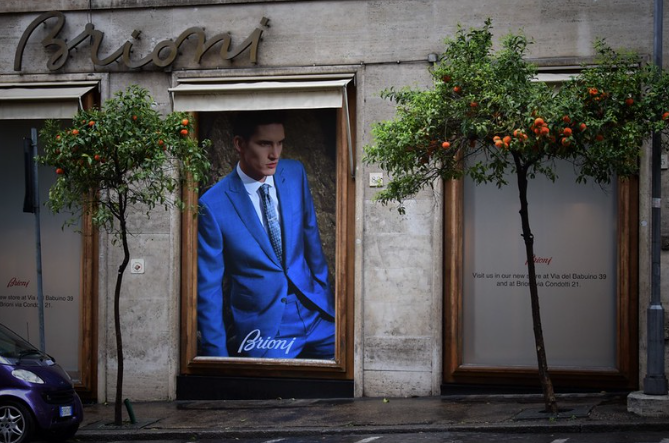
As a more niche brand within the top 100 luxury fashion brands is Brioni. Brioni is renowned for its sartorial expertise in bespoke suiting. Though best known for men’s suiting, the brand expanded into women’s luxury fashion with a focus on sophisticated, tailored pieces. Nazareno Fonticoli and Gaetano Savini founded Brioni in Rome in 1945. Brioni pioneered the concept of a men’s runway presentation when they rose to fame with its first men’s fashion show in 1952. The brand’s use of premium fabrics, like the highest-grade wool, silk, and cashmere, combined with bespoke tailoring, set it apart in luxury fashion.
Brioni’s manufacturing process remains artisanal, with a focus on made-to-measure suits produced in its Penne, Italy atelier. Brioni’s reputation grew globally through celebrity endorsements and a commitment to meticulous, hand-finished designs that blend classic style with modern refinement.
Alaia
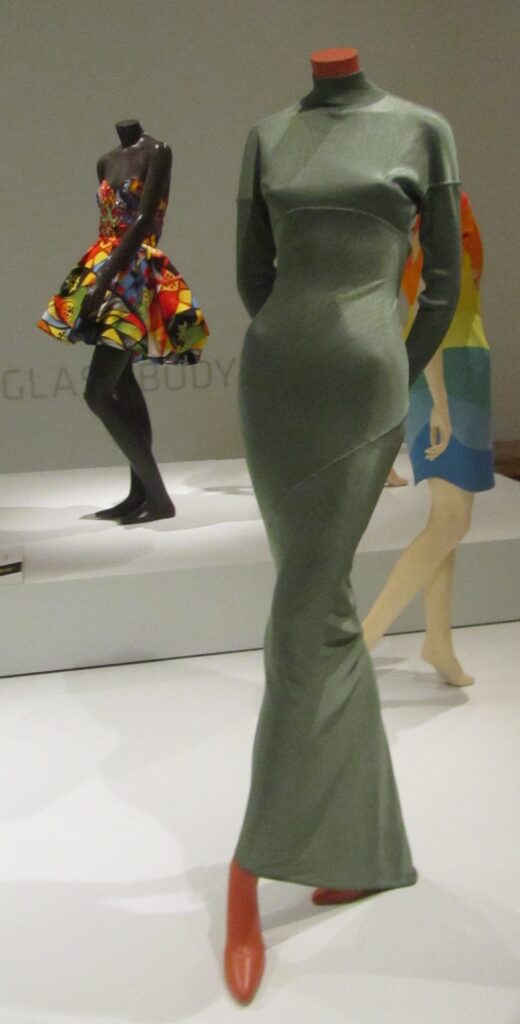
Azzedine Alaïa founded Alaïa in the 1980s. The brand quickly gained fame for its figure-hugging designs and precise tailoring, earning the founder the title “King of Cling.” His work, celebrated for its sensuality and elegance, stood out for its innovative use of fabrics like stretch knits and leather, blending structure with fluidity.
Alaïa’s rise was propelled by a devoted following of high-profile clients, and his meticulous craftsmanship set him apart in the luxury market. His woven leather bags, such as the “Cabas” and “Bombe,” showcase the same attention to detail, becoming iconic accessories. Now part of the Richemont Group luxury goods conglomerate, Alaïa continues to embody refined femininity and timeless luxury on a global scale.
Jacquemus
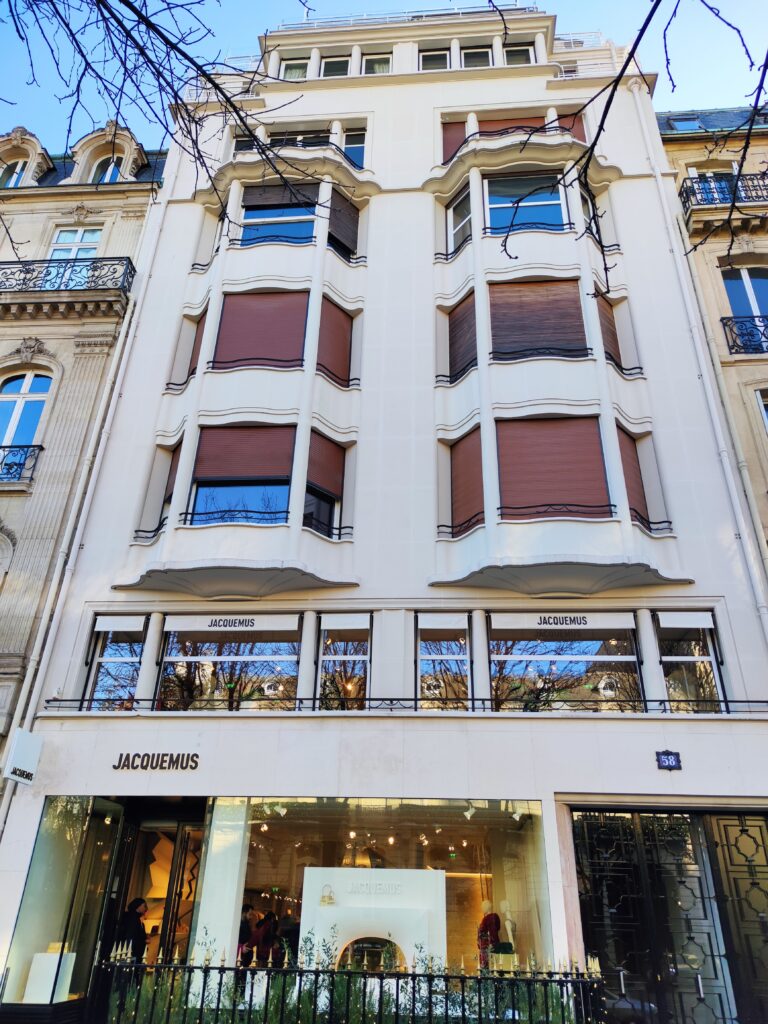
Simon Porte Jacquemus, a self-taught designer from southern France, founded Jacquemus in 2009. The brand draws inspiration from his rural upbringing and a strong connection to nature. This is reflected in the simplicity and natural fabrics used throughout his collections. Jacquemus emphasises minimalism with a youthful and artistic flair. His pieces showcase playful proportions, bold colours, and experimental silhouettes that feel fresh yet accessible.
The brand is known for its unique take on accessories, especially the iconic “Le Chiquito” bag. This played a key role in popularising the micro-bag trend. Other notable pieces include oversized straw hats, asymmetrical dresses, and sculptural knitwear. Jacquemus focuses on sustainability and eco-conscious fashion by prioritising natural fibres like linen, cotton, and wool that are ideal for all seasons, especially their spring essential tops. Furthermore, expansion into swimwear, footwear, and menswear has broadened its appeal.
Oscar de la Renta
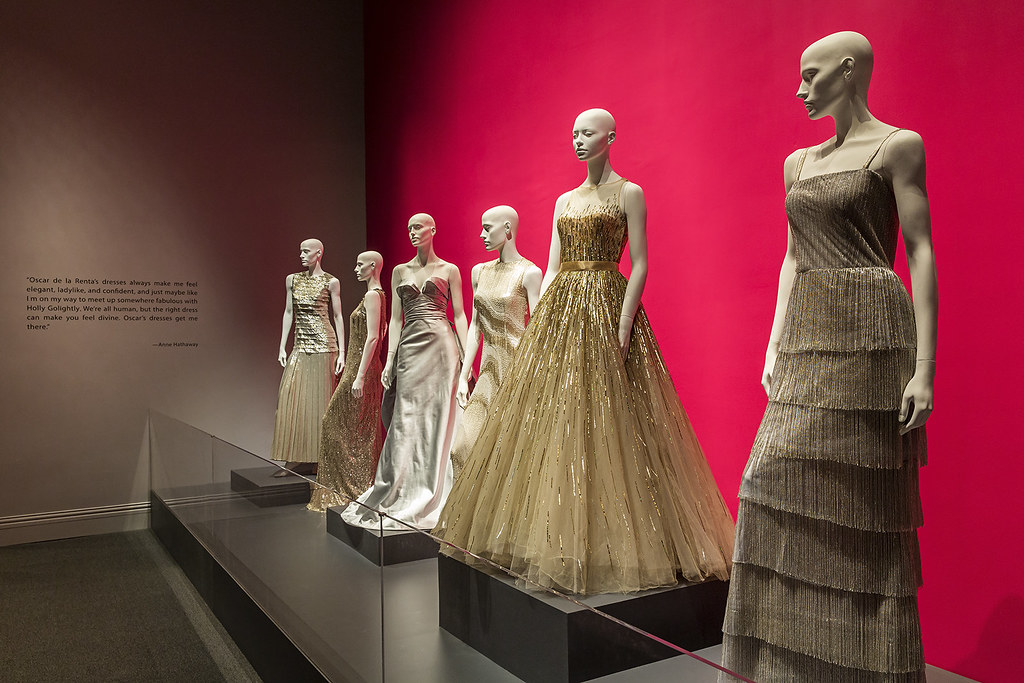
Oscar de la Renta, founded in 1965, quickly became a symbol of timeless elegance and luxury. Renowned for its refined haute couture and bridal collections, Oscar de la Renta gained global recognition through its opulent gowns and intricate embroidery. The brand’s intricate beadwork, lace appliqués, and the use of luxurious textiles such as silk, taffeta, and organza, showcase the couture-level attention to detail. De la Renta’s designs, worn by royalty and Hollywood elites, exude femininity and sophistication, setting him apart from competitors through his ability to blend classicism with modernity.
The brand’s rise to fame was fuelled by de la Renta’s mastery of couture techniques and his keen eye for detail. His Spanish heritage inspired the vibrant floral motifs, romantic silhouettes, and voluminous skirts of his pieces, which stand out for their exquisite craftsmanship. Today, Oscar de la Renta remains a staple in luxury fashion, with a focus on timeless silhouettes and impeccable tailoring.
Louis Vuitton
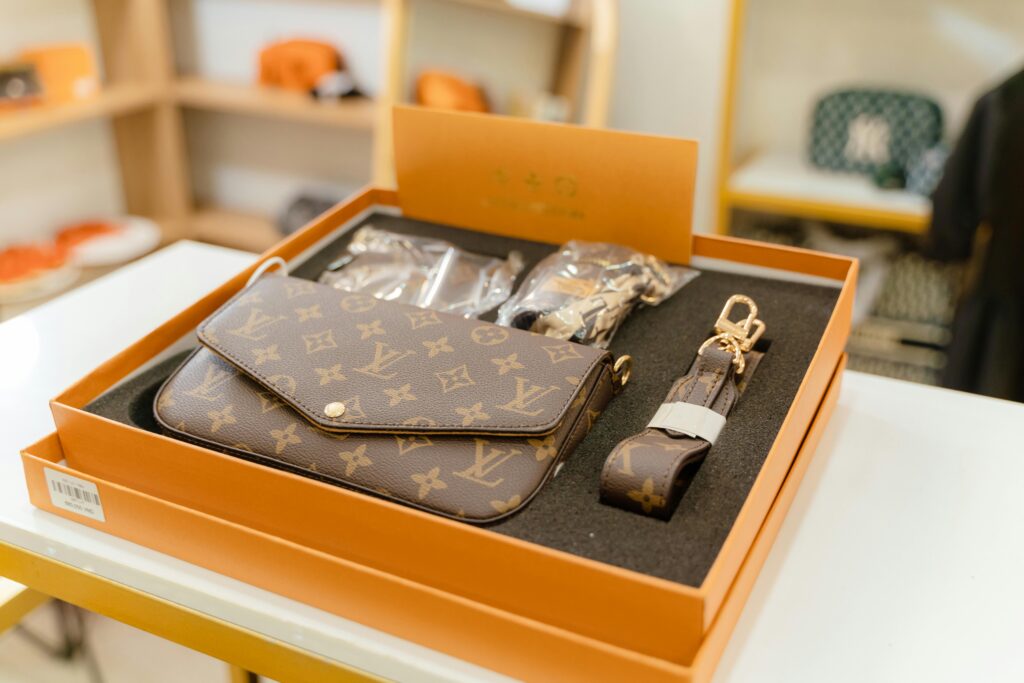
An article encompassing the top 100 luxury fashion brands would be incomplete without Louis Vuitton. Louis Vuitton began in 1854 as a trunk-maker in Paris, founded by Louis Vuitton himself. The brand initially revolutionised the travel goods industry with flat-topped trunks that were both stackable and durable, a major innovation at the time. Moreover, Vuitton had been the personal box-maker and packer for Empress Eugénie, wife of Napoleon III, which greatly elevated his profile.
Louis’ son, Georges Vuitton, introduced the iconic LV monogram in 1896 to protect against counterfeiting: a design that grew to be infamously recognised as a luxury status symbol. The brand maintained a focus on craftsmanship and meticulous sourcing of materials, such as the use of high-grade leathers and durable coated canvas.
Its expansion was driven by the creation of flagships stores in major fashion capitals and a firm association with luxury travel. Under the leadership of Georges Vuitton and later Gaston-Louis Vuitton, the company expanded its offerings beyond trunks and travel goods. They introduced Louis Vuitton handbags, such as the “Speedy” and “Noé” bags,
This evolution was perfectly timed with the rise of a more mobile, cosmopolitan middle class in the 20th century. At this time, women began to seek more luxurious everyday accessories. Louis Vuitton met this market demand with their handbags that encapsulated the prestige of their heritage branding and functional design. By the 1980s and 1990s, under Bernard Arnault’s leadership, the brand introduced ready-to-wear collections, adding a modern, fashion-forward dimension to its heritage in craftsmanship.
The brand grew into a luxury fashion powerhouse under the LVMH conglomerate, which acquired Louis Vuitton in 1987. Louis Vuitton blends heritage with contemporary fashion, making it a dominant player in both leather goods and luxury accessories.
Tony Ward
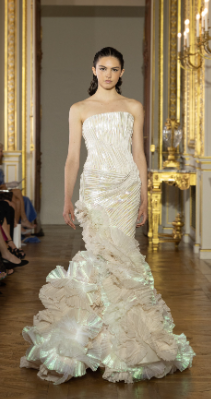
Tony Ward, a Lebanese-Italian designer, launched his namesake luxury evening wear brand in 2006. Though, his roots in couture trace back to his father’s atelier in Beirut, where he learned the fundamentals of craftsmanship from an early age. Ward honing his skills at prestigious fashion houses like Dior, Lanvin, and Chloé. Later, he developed a unique aesthetic that blends his Lebanese heritage with the precision of Italian tailoring. Ward’s haute couture collections are known for intricate embroidery, sophisticated beadwork, and the use of opulent fabrics such as silk, satin, and tulle, often sourced from the finest European suppliers.
Ward’s ability to create sculptural gowns that emphasise both structure and fluidity has set him apart from other haute couture designers. His designs often feature architectural lines softened by delicate detailing, striking a balance between modernity and timeless elegance. This craftsmanship, along with his ability to cater to a global clientele, earned him a spot in the top 100 luxury fashion brands. Moreover, his work is often showcased in Paris Couture Week.
Celine
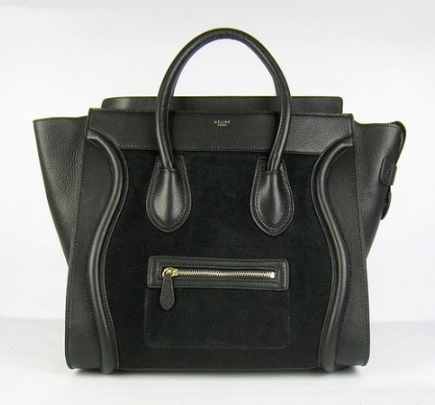
Céline Vipiana founded Céline in 1945 in Paris. The brand initially focused on made-to-measure children’s shoes made from quality craftsmanship and innovative design. In the 1960s, the brand expanded into women’s ready-to-wear, becoming known for its minimalist aesthetic and sleek silhouettes.
Under LVMH’s ownership since 1996, Céline gained global prominence. The brand’s strategic direction included high-quality materials like leather and cashmere. Hedi Slimane’s appointment in 2018 revitalised the brand, infusing it with a contemporary edge through bold designs and a focus on youth culture.
Céline’s commitment to understated luxury and timeless elegance sets it apart from competitors, making it a sought-after label among fashion enthusiasts. Iconic products include the “Luggage” tote and the “Triomphe” bag, both reflecting a refined sophistication that resonates with modern consumers.
Discover more iconic names in luxury fashion—don’t miss Part 2 of Top 100 Luxury Fashion Brands for the next set of world-renowned style leaders and timeless innovators.
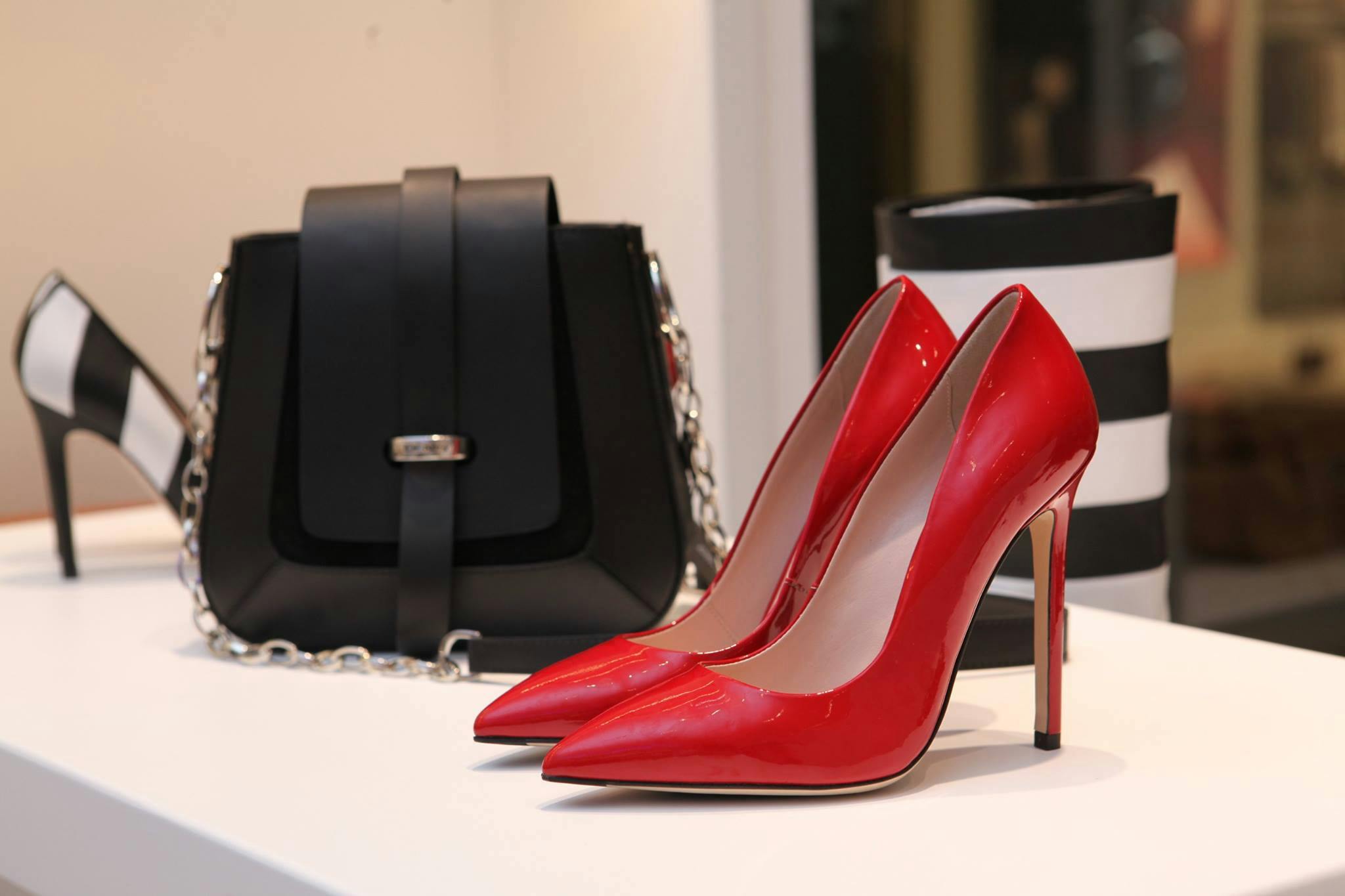
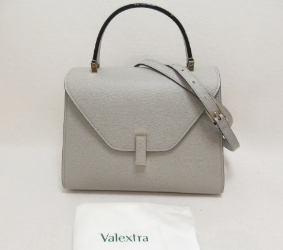

Leave A Comment